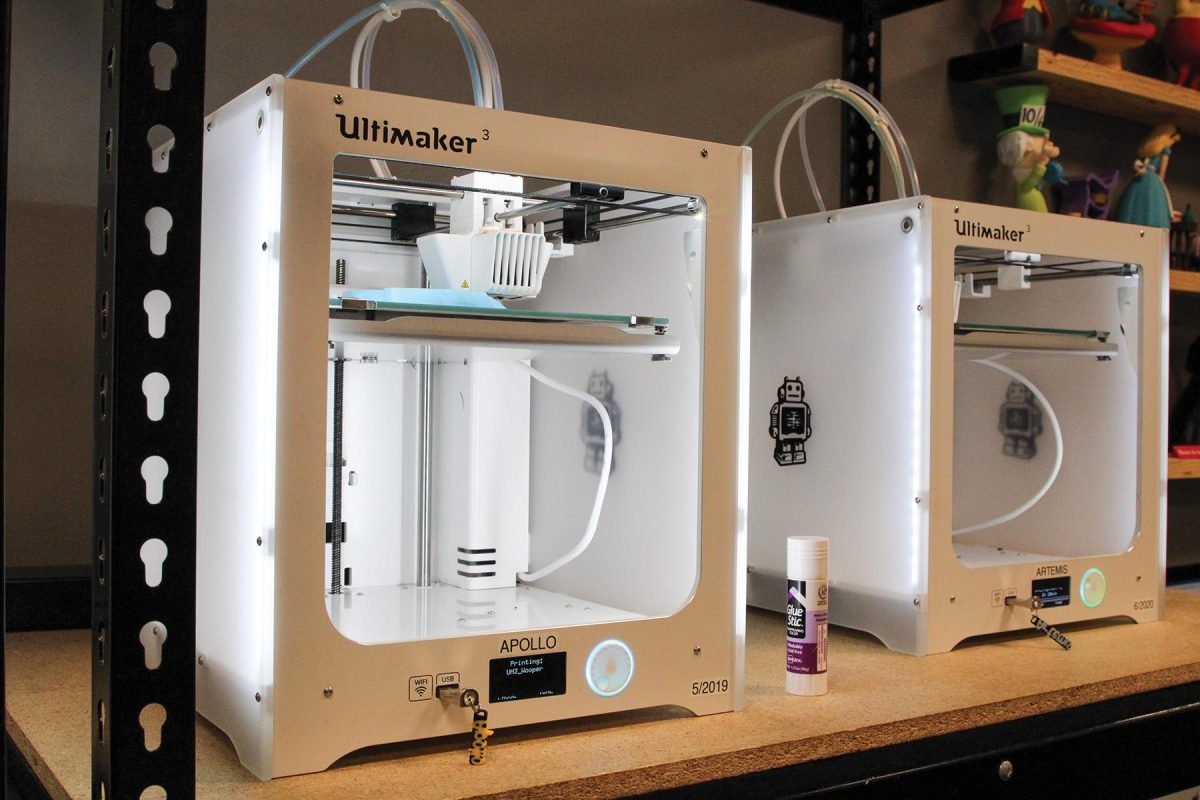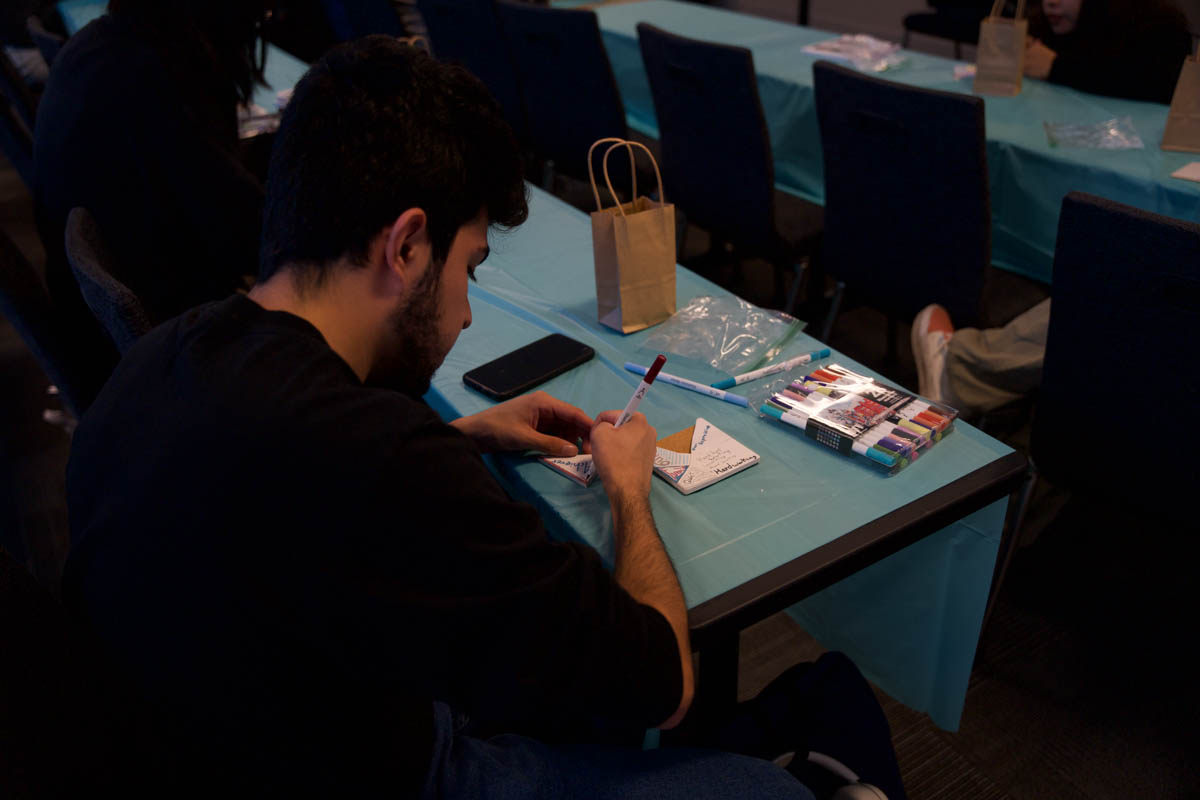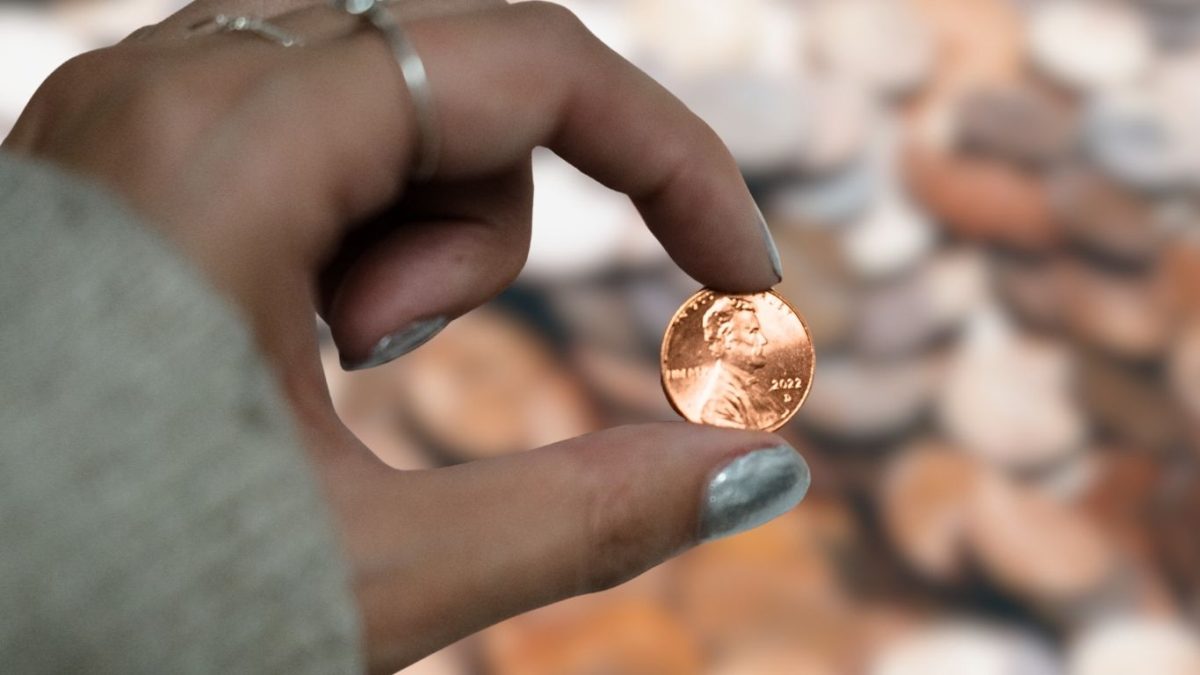In CSUN’s Creative Maker Studio, each 3D printer is named after a Greek god. There is Zeus, and his daughter Athena—she is barely bigger than a mini fridge, and costs roughly $1,000. In capable hands, she brings ideas to life and prints objects out of plastic. Some fashion designers are pushing the boundaries of what these printers are capable of, though the limits of today’s technology will require them to be more flexible.
There are a total of nine printers lining the walls inside their lab in the Creative Maker Studio. It is a small room on the first floor of the library, filled with the constant whirring and whizzing of plastic being summoned before one’s very eyes—though despite the tech wizardry, it sounds no louder than a conventional paper printer.
3D printing is a versatile technology. It can print a multitude of things, from car parts, to school supplies, to NASA-grade space materials and maybe even clothes.
It most commonly involves strands of colorful plastic that are melted, extruded and then hardened into the desired shape.
“The 3D printing process turns a whole object into thousands of tiny little slices, then makes it from the bottom up, slice by slice,” Andrew Walker wrote in the Independent. “Those tiny layers stick together to form a solid object.”
This is the process available to average consumers. Technology evolves fast—today, most folks can buy a competent 3D printer for around $200.
It’s not just plastic, either. 3D printing complex objects with metal is possible, but it’s an expensive and highly technical process that only advanced laboratories can pull off—like NASA, who are experimenting with a type of 3D-printed chain mail armor for future astronauts.
Fabric is trickier. Real fabric, the soft kind you can wear comfortably on your body, is still being developed. Fashion designers like Anouk Wipprecht and Julia Daviy are creating bold, bombastic 3D-printed dresses with elegantly bizarre looks, but they’re still made of hard plastic. They fit more on the runway than Matador Way. Shoes might be a different story—Adidas partnered with tech company Carbon in 2017 to create a shoe with a 3D-printed midsole that was available to purchase. It retailed for $220.
3D printing using conventional plastic methods could never replicate clothing fabric. It’s rigid, not very flexible and can’t be woven together into convincing textiles. But crafty internet users have discovered a niche use case where rigidity is a pro rather than a con—printing suits of armor that would make Athena proud.
These modern day blacksmiths forge impressive pieces of work. The costume workshop Order 66 Creatures and Effects created a full replica of Batman’s suit. Cosplayer Frankly Built donned Tony Stark’s Iron Man armor.
3D printing has exploded in the cosplay scene. Hollywood stylists and animators create fantastical clothes and accessories that can’t exactly be found at your local superstore, but with some plastic and some time to spare, anything’s possible at home (or at your local university’s library).
The Creative Maker Studio will let you print 3D projects completely free if you’re a CSUN student, and as long as you follow their guidelines. The final print can’t weigh more than 160 grams and the print can’t take more than 10 hours. Just be sure to make an appointment with them online and you’ll be able to take your newly printed object home with you, as long as whatever you print follows CSUN’s policies and code of conduct.
You might not be able to print a new pair of jeans at home, but 3D printing technology continues to evolve. Who knows what might happen someday? At least for now, you can print a suit of plate armor.














